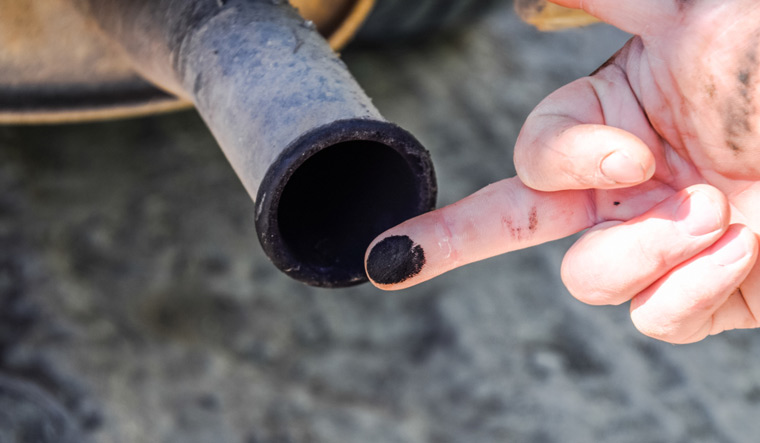Black Carbon has a significant adverse effect on human health and can lead to a premature death, according to a new study, which could help improve the estimation of the future air pollution mortality burden. The Indo-Gangetic plain is exposed to Black Carbon (BC) with serious implications on regional climate and human health, but the health effects in terms of mortality due to BC aerosol exposure have never been evaluated in India, the study says.
Most pollution-based epidemiological studies essentially relate exposure to the concentration of particulate matters (PM-10 and/or PM -2.5) that invariably generalise all particulates with equal toxicity without distinguishing among them by source and composition, which genuinely have different health consequences.
Scientist R K Mall led the team of other scientists including Nidhi Singh, Alaa Mhawish, Tirthankar Banerjee, Santu Ghosh, R S Singh from the Department of Science & Technology-Mahamana Centre of Excellence in Climate Change Research (MCECCR) at Banaras Hindu University which conducted the story.
The team explored the individual as well as the cumulative impact of BC aerosol, fine (PM 2.5), and coarse (PM 10) particulates, and trace gases SO2 (sulphur dioxide), NO2 (nitrogen dioxide), O3 (trioxygen) on premature mortality in Varanasi.
Their research was recently published in a reputed journal Atmospheric Environment'.
"The study could also help estimate the future burden of mortality associated with air pollutants considering the present association and incorporating a growing population rate. This will help government and policy-makers for better planning to mitigate the adversity associated with changing climate-air pollution-health nexus, the Department of Science and Technology said in a statement.
A typical urban pollution hotspot in central the Indo-Gangetic Plain (IGP) experiences a very high aerosol loading and trace gas concentrations throughout the year due to prevalence of a subsidence zone.
Also, such centres have observed decadal increasing trends both in Aerosol Optical Depth and Black Carbon aerosols.
The scientists from the MCECCR supported by the Climate Change programme of Department of Science and Technology (DST) utilised daily all-cause mortality and ambient air quality from 2009 to 2016 to clearly establish a significant impact of BC aerosols, NO2 and, PM2.5 exposure on mortality, a DST statement said.
The inclusion of co-pollutants (NO2 and PM 2.5) in the multi-pollutant model increased the individual mortality risks for BC aerosols, it said.
It added the effect of pollutants was more prominent for males in the age group of 5-44, and in winters. The scientists found that the adverse effect of air pollutants was not limited to the day of exposure but can extend as high as up to 5 days (lag effect).
They further showed that mortality rises linearly with an increase in air pollutants level and shows adverse impact at higher levels.
The inclusion of BC as a potential health hazard inspires and provides a background for more epidemiological studies to provide evidence of health effects of air pollutants from different parts of India, the DST added.





